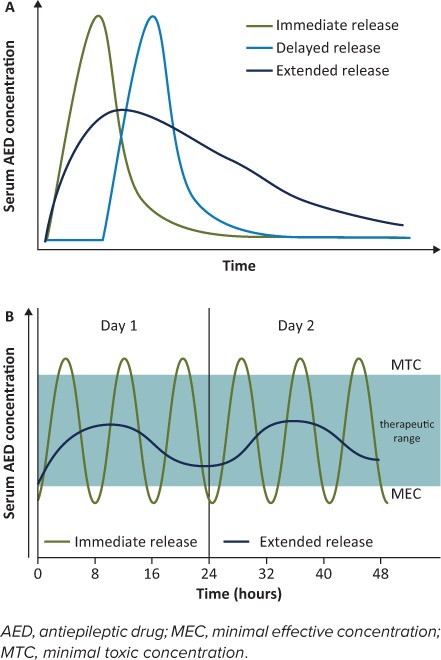Figure 1.

Schematic diagrams of changes in blood serum drug concentration (SDC) over time for different drug delivery systems. (A) For the immediate-release (IR) formulation, almost immediately following ingestion, the SDC rises and quickly peaks before rapidly falling off. For the delayed-release formulation, the SDC profile is similar to the IR formulation, but there is a lag phase following ingestion before the drug is released. For the extended-release (ER) formulation, the SDC rises more slowly from the time of ingestion, forming a much broader concentration curve over time. (B) Simulated SDC–time curve at steady state for IR (administered 3 times a day) and ER (administered once daily) AED formulations during a 2-day period. Repeated doses of the IR formulation are required to maintain SDC within the therapeutic zone for optimal seizure control; this can result in wide peak-to-trough fluctuations in concentration. For some patients, seizure control with the IR formulation may require drug doses that result in a peak concentration that is above the therapeutic zone shortly after administration. This increases the likelihood of concentration-related toxicity. The SDC troughs shortly before the next IR dose and may be below the therapeutic zone, increasing the risk of seizures. By comparison, the once-daily dosing of the ER formulation minimizes peak-to-trough fluctuations, maintaining the SDC within the therapeutic zone, and thus avoiding an increase in the likelihood of either toxicity or seizures.
